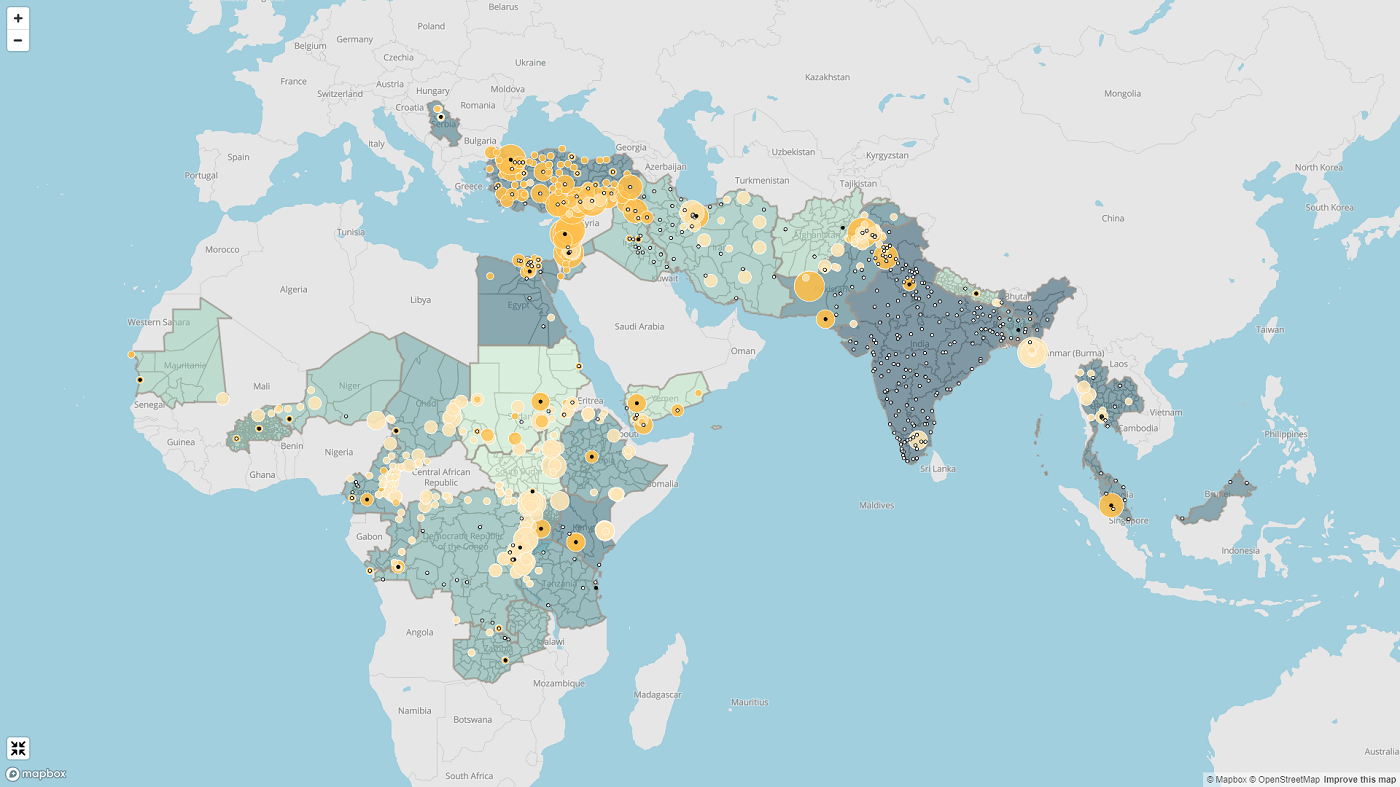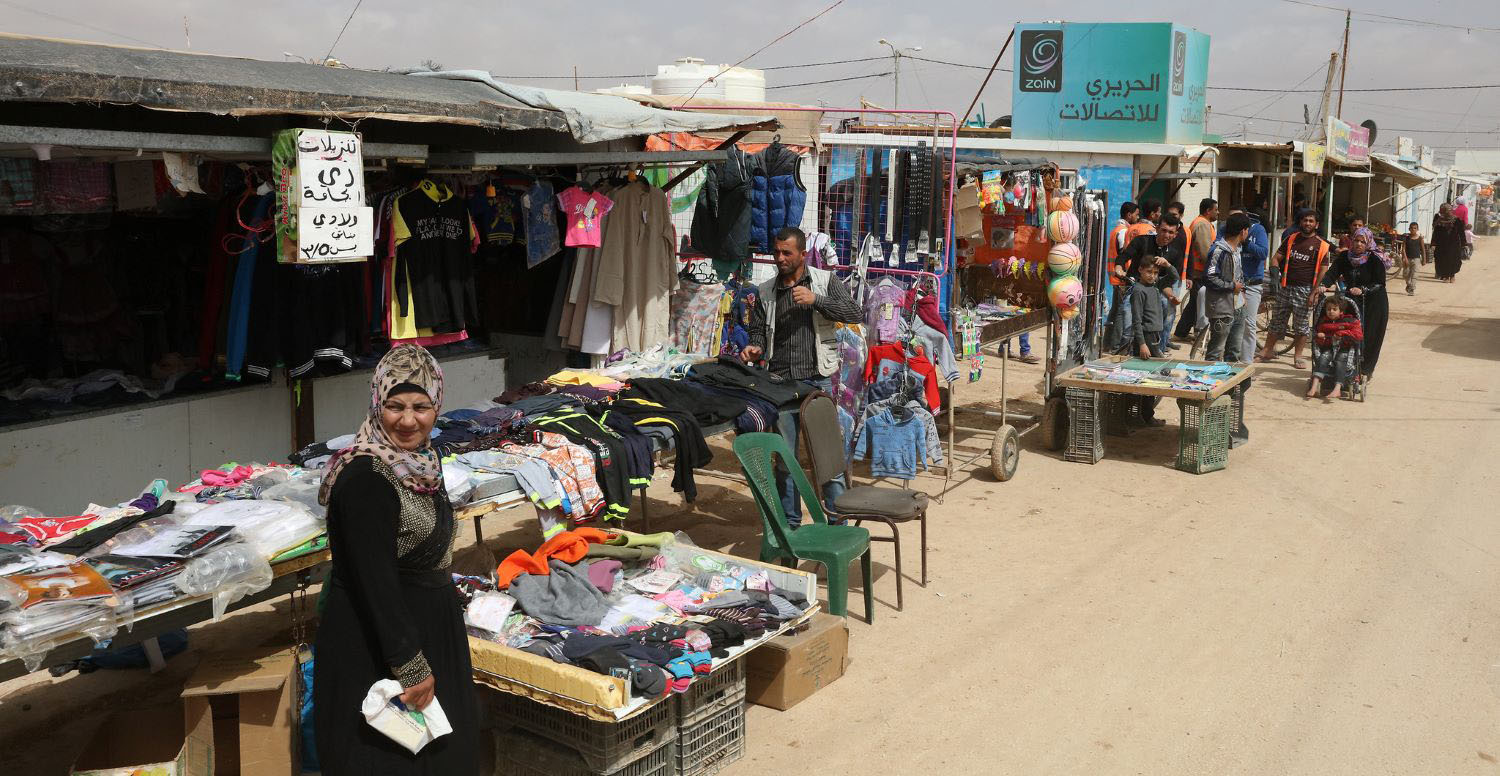Recommended
When most people think about refugees, they think of sprawling camps separated from the rest of society. But in reality, today—World Cities Day—over 60 percent of the world’s 26.4 million refugees and around half of the world’s 48 million IDPs live in urban areas, mostly in low- and middle-income countries.
For refugees, these urban areas offer economic opportunity, the promise of self-reliance, and the ability to exercise choice as to where and how to live. For the cities themselves, these new residents can provide economic and cultural benefits. Many of these refugees are young and are able to contribute their skills to drive innovation, enterprise, trade, and investment.
Despite this reality, far less investment goes towards supporting urban refugees than those in camps. The international community has been slow to understand the different needs of urban- and camp-based displaced people. Despite commitments to enhance refugee self-reliance in the 2018 Global Compact for Refugees, few donors directly support city authorities and urban communities that host refugees.
How is the integration of refugees in urban areas different?
It can be easier to support refugees in camps in the short term, mainly because they’re all in one place. Urban areas have more complex political, social, and service-provision structures. Cities are growing at an exponential rate, often beyond the ability of governments to support the expansion of services. These factors highlight the need for significant investments to support cities and for research to increase understanding of urban refugees’ needs.
Housing
Most fast-growing cities in low- and middle-income countries don’t provide enough low-cost housing for their own populations, let alone people who have been displaced. Refugees therefore end up paying extremely high costs for rent and utilities, with little access to cash-based assistance and other forms of humanitarian support.
For example, research in Jordan and Iraq found that income gains from living in a city were cancelled out due to higher rent payments. Another study, of Syrian refugees in Jordan, found that rent is the single highest expenditure, equating to more than half of all household expenses. COVID-19 has made it even more difficult for some refugees to cover their rent payments.
The labor market
Many assume that urban-based refugees will easily be able to find work, as they are better connected to job opportunities. However, legal and practical barriers often prevent this. Refugees do not have the legal right to work in the majority of countries, and even if they do, accessing formal work is challenging.
As a result, many refugees work in the informal sector or in precarious industries with little access to social protection. Refugees were 60 percent more likely than host populations to be working in industries like accommodation and food services, manufacturing, and retail—industries judged by the International Labour Organization (ILO) to be highly impacted by the COVID-19 pandemic.
Services
Refugees in camps often receive protection, health, education, cash assistance for basic needs, and livelihoods support. Those in urban areas have more limited access to humanitarian aid—particularly where governments have strict encampment policies—and often mostly rely on the public provision of these services.
The needs of refugees in urban areas and camps are different and require a different set of policy responses.
However, access to these public services can be difficult for refugees arriving in an unfamiliar city where they don’t know the language and have no information about formal registration procedures. Formal identity documents that enable access to services can be very hard to come by due to long and complex bureaucratic procedures.
Refugees may also have difficulty accessing services due to prejudice or an inability to pay fees or bribes, and they may face harassment in public spaces and be vulnerable to abuse from landlords and the police.
How should governments and the international community respond?
The needs of refugees in urban areas and camps are different and require a different set of policy responses. Key to this are city and local governments, national governments, and the international community.
City and local governments
City and local governments may have little experience with providing specialized services for displaced populations and are usually constrained in both capacity and financial resources. Partnering with humanitarian and development actors can help. For example, the International Rescue Committee (IRC) provided technical support to the Kampala Capital City Authority (KCCA) to release its first strategy aiming to provide city services to refugees. Today, KCCA are working closely with humanitarian and private sector partners to implement the goals in the strategy.
Cities can also work better together. For example, in the Marrakech Mayors Declaration, cities pledged to work together to address and reduce vulnerabilities, provide essential services, and eliminate discrimination against displaced people, exchanging best practices at new annual Mayoral Forums.
National governments
Providing refugees with the right to work, move, and thrive ensures they can fully contribute to their host communities as employers, employees, taxpayers, and innovators. When refugees can better provide for themselves and contribute to the economy, it can reduce or even eliminate the costs of supporting displaced people. For example, if these barriers were removed in Colombia, Venezuelans’ average monthly income would increase as would the number of formal sector workers, contributing US$1 billion in GDP every year.
To realize this benefit, national governments should provide refugees with these legal rights, while also finding policy interventions that make sure these rights are being put in practice. They should also ensure that the needs of refugees are integrated into national policies. Here, COVID-19 provides an illustrative example. By the end of 2020, 92 percent of UNHCR’s “people of concern” living in cities were given access to primary health care on the same basis as nationals. This access supported both healthcare and vaccine delivery, slowing the spread of the pandemic.
The international community
Donor governments have long supported UNHCR and other international actors in delivering services to camp-based refugees, but have largely failed to support urban-based refugees. As Innocent Silver, the Project Manager of the Kampala Capital City Authority (KCCA), recently told the IRC:
“There is clarity on what needs to be done, but until those plans are funded they don’t mean much... Urban response calls for a more protracted development approach—one that considers more permanent fixes.”
Supporting national and local governments, as well as community-based organizations, can be done through bilateral support, as well as through contributing to larger international calls for displacement financing. One such call is the US$2 billion refugee sub-window of the World Bank’s IDA20 replenishment. As well as contributing, donor governments could direct that the money be spent in support of urban refugees.
The upcoming High Level Officials Meeting that monitors the implementation of the Global Compact for Refugees is another opportunity to mobilize additional investments.
Re:Build
For these actors to craft the right policy responses, they need to know which programs and policies are most likely to support the self-reliance of urban refugees and their host communities. But, to date, too little rigorous research has actually addressed this question. We are trying to close this gap.
With the support of the IKEA Foundation and in collaboration with many other partners, CGD and IRC have embarked on a five-year long initiative to develop livelihood opportunities for refugees and their hosts in Kampala (Uganda) and Nairobi (Kenya). In particular, the initiative—Refugees in East Africa: Boosting Urban Innovations for Livelihoods Development (Re:Build)—seeks to provide job and business support to 20,000 people.
We will be conducting randomized controlled trials (RCT), one in each city, along with many pilot projects exploring which combinations of training, mentoring, cash assistance, and other business support make the biggest difference. The results from these will be continuously fed back into the project to better structure future interventions.
As the number of refugees living in cities continues to grow, we hope this World Cities Day will be a turning point in how we approach urban displaced populations.
Disclaimer
CGD blog posts reflect the views of the authors, drawing on prior research and experience in their areas of expertise. CGD is a nonpartisan, independent organization and does not take institutional positions.
Image credit for social media/web: UN Women/Christopher Herwig






